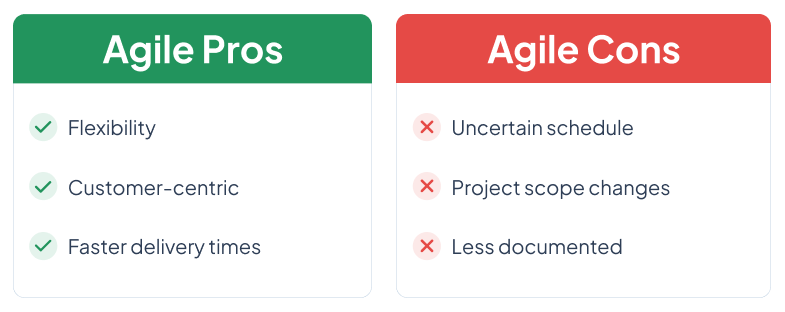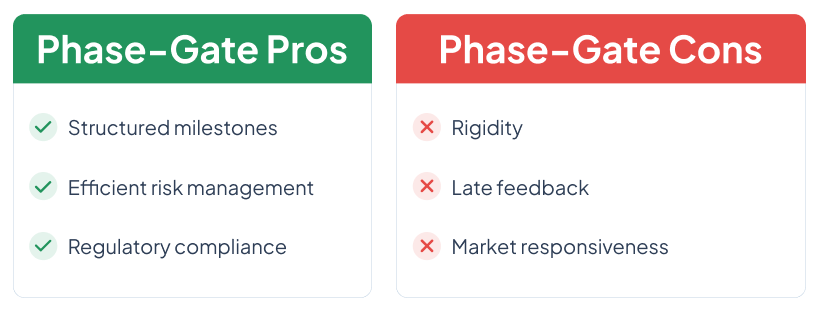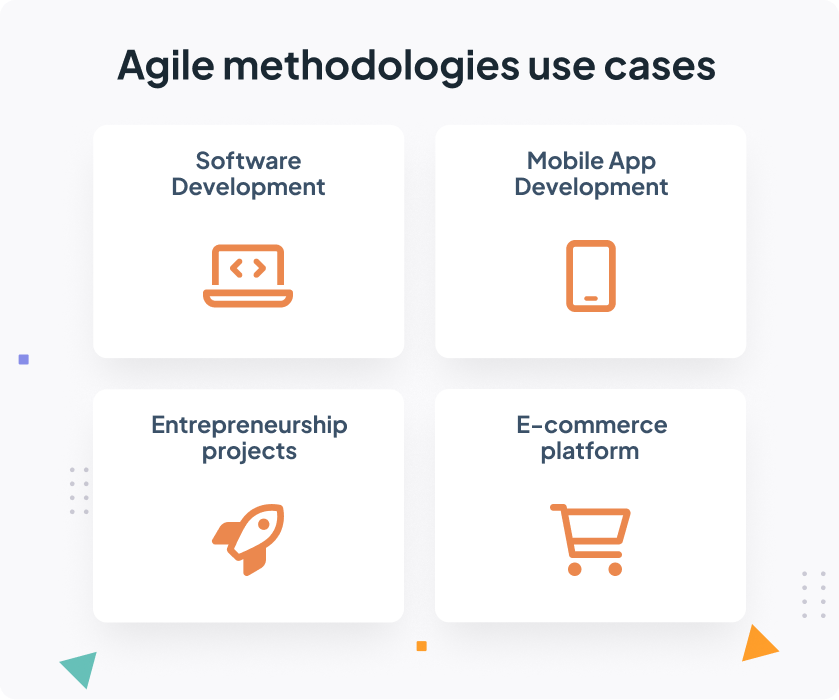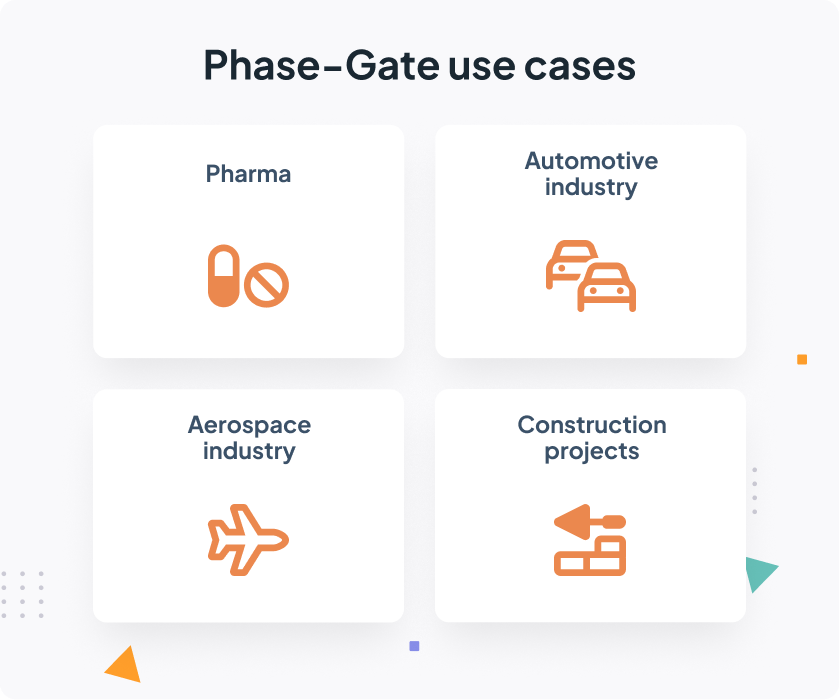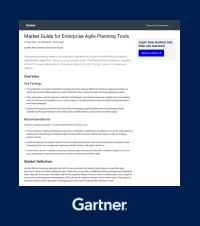Agile vs Stage Gate: choosing the Rrght path for New Product Development

New product development is constantly evolving. And organizations face the challenge of choosing the most appropriate methodology to position their products before anyone else in the market. Stage Gate or Agile? Which one to adopt?
In this post we will analyze both methodologies in depth, highlighting their strengths and weaknesses, and the most appropriate use cases for each approach. At the end of the article, you will have all the insights you need to determine the right path for your New Product Development and R&D projects.
Is Agile killing Stage-Gate Process?
The debate is buzzing – is Agile killing the Stage-Gate process? If you think about it, Agile methodologies fit perfectly with New Product Development. Agile ensures that companies, thanks to its dynamic and customer-centric approach, can bring new products to market faster than anyone else in a business environment where competition is increasingly fierce.
Agile ensures that companies can get their products to market before anyone else
See the Triskell platform in action in a personal demo
However, it is not all advantages. Although Stage-Gate may be perceived as an archaic and inflexible process, the truth is that it is the ideal framework to address many of the challenges involved in New Product Development. Issues such as risk management, compliance assurance or requirements management for this type of project would not be managed in the same way without a structured process such as Phase-Gate.
So, before drawing conclusions about whether Phase Gate or Agile is better, let’s dissect the nuances of both approaches and recognize the elements in which each contributes to New Product Development.
Phase-Gate process: a brief overview
In general terms, Phase Gate has certain similarities with Waterfall. It is a methodology that splits projects into several phases, in which each new phase begins once the previous one has been completed. As a general rule, these phases are as follows:
- Ideation: in this initial phase, the different new product ideas presented are conceptualized and their feasibility is evaluated.
- Scope: Once the idea is defined, the feasibility of the idea is analyzed based on the market research you have carried out.
- Planning and business case creation: This is where the business case and all project plan details are developed, from timelines and risk allocation to financing and risk mitigation strategies.
- Development: This is the phase when the vision and prototype of the new product begin to materialize.
- Testing: Here the relevant tests and validations are carried out to detect possible improvements to the original prototype.
- Launch: the product has passed all the previous stages and is launched on the market.
At the end of each phase, the project undergoes a rigorous review to decide whether it moves on to the next phase. This is called a ‘Stage Gate Process Review’.
During this, all departments and stakeholders involved in new product development evaluate whether the project is meeting the predefined criteria for that particular phase. And, depending on whether or not they have detected problems or deviations from the original plan, they decide whether to move on to the next phase, fix the problems detected or cancel the project.
The ‘sequential’ nature of the Stage Gate process is especially beneficial in those industries where regulations, risk management and compliance requirements are paramount. However, due to the rigidity of the process, it can be especially challenging to make adjustments or changes to the project schedule once it is already in the advanced stages. Something that, with Agile methodologies, is easier to overcome.
A comprehensive guide of Phase Gate Process for R&D projects.
How Agile is evolving New Product Development
If agile methodologies (Scrum, Kanban, Lean, etc.) are the preferred ones for software developers or IT engineers, it is mainly due to the flexibility they offer when it comes to changing the product’s objective or the approach to create the final product.
In the Stage-Gate process, when the project reaches the development phase, in most cases both the final product and the value it will bring to the market are defined. This means that, with this methodology, it is difficult to adapt to possible changes that may arise in the scope or objectives of the final product.
Agile ensures that companies can get their products to market before anyone else
With Agile methodologies, on the other hand, this does not apply, since they assume that project requirements can evolve over time. The Agile Manifesto recognizes that the best solutions emerge through experimentation and incremental adjustments. An approach that is especially valuable in New Product Development or R&D environments, where customer preferences and market dynamics can change very quickly.
Thanks to its responsiveness to change, its ability to foster team collaboration and to offer solutions aligned with customer needs, Agile has been gaining ground over S-Gate for New Product Development.
However, Agile is not always the solution. In many occasions it can lead to lack of coordination between teams or to periods of uncertainty in the projects due to not having well defined project deadlines. In the next section, therefore, we will analyze the pros and cons of each approach, and in what type of contexts one or the other works best.
Agile vs Stage–Gate: pros and cons for each approach
Now that you’ve seen how Agile is revolutionizing New Product Development, you need to weigh the pros and cons of each approach. Each presents its own unique benefits and challenges, and understanding them in depth will allow you to make more informed decisions about which methodology is the best choice for each context.
Agile advantages and disadvantages
Let’s start first with the benefits of Agile methodologies for New Product Development projects:
- Flexibility: the hallmark of Agile is its adaptability. The iterative nature of Agile enables teams to respond quickly to changing market conditions, technological advances and customer preferences.
- Customer-centric: Agile emphasizes customer and user involvement throughout the entire new product development process. Regular feedback from customers is the best guarantee that the final product will meet their needs and expectations.
- Faster delivery times: Since usable product enhancements are released at the end of each Sprint, organizations can bring functional components to market earlier, giving them a competitive advantage.
See the Triskell platform in action in a personal demo
On the other hand, these are the disadvantages of Agile for this type of initiative:
- Uncertain schedule: while Agile’s iterative approach facilitates change, it can also make it difficult to establish exact project timelines. A drawback especially in organizations working under tight schedules or facing external pressures.
- Project scope changes: because of Agile’s flexibility, it is very common for your team to be forced to add additional functionality during development that was not foreseen in your initial vision and planning.
- Incomplete documentation: The fact that Agile prioritizes project progression over thorough documentation of everything that has been done complicates knowledge transfer and long-term project maintenance.
Agile pros and cons: should CEOs embrace agility?
Pros and cons of Phase-Gate
Let’s see now the benefits of the Phase – Gate process:
- Structured milestones: As we already explained, Phase Gate is structured in phases. And, at the end of each one there is a review process to determine whether or not the project progresses to the next one. This approach allows organizations to have greater control over risk management, fund allocation and regulatory compliance.
- Efficient risk management: These phase review processes ensure that potential risks and problems are detected throughout the entire new product development process. The likelihood of critical errors being missed is much lower.
- Compliance assurance: Thanks to Phase Gate’s rigorous review and documentation processes, you can ensure that you are compliant throughout the project lifecycle.
And these are the disadvantages of the Stage – Gate process for R&D projects and New Product Development:
- Rigidity: due to the sequential nature of the process, once a phase is completed, it is difficult to make changes without affecting subsequent stages of the project.
- Late feedback: in many of the initiatives that are executed following the Stage Gate methodology, stakeholder feedback is only obtained during the review process. This can cause costly revisions and improvements for critical issues that have already been identified in later stages of development.
- Market responsiveness: due to the linear structure of the process, it is often difficult to respond in time to changing market trends. This may result in project cancellations at advanced stages of the project.
Benefits of Stage Gate Process for Resource Management.
Agile vs Phase Gate: examples and use cases
Now that we have analyzed in detail the features, benefits and applicability of the Agile and Stage Gate methodology, it is time to delve into concrete cases that illustrate how both the Stage Gate process and Agile methodologies adapt and shine in different new product development contexts.
Through these examples, you will gain a deeper insight into how each approach is deployed in real-world situations, and how each is best suited to the specific needs and challenges of various projects and industries.
These are some examples in which it is advisable to make use of Agile methodologies:
- Software development projects: sprints and continuous feedback cycles help software products stay current and aligned with changing user needs.
- Mobile apps development projects: in this type of context, Agile’s adaptability allows developers to respond to user feedback, fix bugs and introduce new features quickly.
- Startup projects: Agile is ideal for startups as it allows them to iterate quickly, experiment with new ideas and pivot based on market developments.
- E-commerce platforms: Agile can help in such a context to respond to changes in consumer behavior and preferences.
On the other hand, here are some other examples of Stage Gate use cases:
- Pharma industry: due to the strict regulatory requirements and risk management in this industry, a structured approach such as SGate’s helps to ensure the safety and efficacy of new products.
- Automotive industry: Automobile manufacturers use this process to ensure that each stage of development of new vehicle models is thoroughly evaluated to ensure that vehicles meet safety standards.
- Aerospace and Defense: As these are highly complex projects, the aerospace industry uses the Stage Gate process to meticulously evaluate and validate each phase before moving forward.
- Construction projects: Stage-Gate is especially beneficial for large-scale construction projects to effectively manage project milestones, mitigate risks and ensure compliance with safety regulations.
Agile Stage Gate: introducing a Hybrid approach to New Product Development
It is clear then that, depending on the business context and your organization’s approach to project and product management, Stage Gate will work better in some cases and agile methodologies in others.
Given that each approach has its advantages and disadvantages, and that new product development is evolving faster and faster in recent years, why not take an in-between approach? Why not take the best of both to optimize your internal processes and practices?
More and more organizations are opting for a hybrid approach, which we can call Agile Stage Gate. It combines the phases and review processes of the Stage-Gate methodology with the work dynamics of agile methodologies.
Agile vs Stage Gate vs Agile Stage Gate: main differences
For example, in this hybrid approach, project phases are divided into 2-week or 4-week Sprints. In these Sprints, unlike in the traditional Stage-Gate process, the teams must focus on delivering a functional product.
In Agile Stage Gate teams focus on delivering functional products
But be careful. Functional product does not mean the final product. It will be a deliverable that can be subject to testing by customers and users and thus be able to receive more frequent feedback from them. This will allow your teams to focus on user needs and adapt quickly to changing market trends.
This is not the only difference between the traditional Stage Gate process and this hybrid approach. Here we highlight two other variations between the two approaches that you should be aware of:
- Focus: while in the classic Stage Gate process it is quite common for teams to be working on several projects simultaneously, in this hybrid approach the new product development teams are fully focused on a single initiative.
- Planning: Project planning is rarely defined in advance but takes shape as it progresses through the various sprints of a phase.
In the following table you can see in a more summarized way all the differences between the Agile Stage Gate hybrid approach with the Phase Gate process and the Agile methodologies:
Aspect |
Agile |
Phase Gate |
Agile Phase Gate |
|---|---|---|---|
|
Methodology
|
Iterative
|
Secuential
|
Hybrid
|
|
Project phases
|
Sprints
|
Predefined phases
|
Phases divided in Sprints
|
|
Review process
|
NA
|
Meticulous evaluations
|
Structured evaluations
|
|
Project Teams
|
Focused in just one project
|
They work on several projects
|
Focused in just one project
|
|
Planning
|
Changing
|
Defined in the early stages of project
|
Changing
|
|
Customer focus
|
Very important
|
Varied
|
Very important
|
|
Risk management
|
Adaptive
|
Structured
|
Balanced
|
|
Documentation
|
Limited
|
Exhaustive
|
Balanced
|
|
Market responsiveness
|
High
|
Potentially limited
|
Balanced
|
Advantages of the Agile Phase Gate approach
As we explore the concrete benefits of this hybrid approach, it becomes clear how Agile Stage Gate effectively addresses today’s product development challenges, providing adaptive solutions without compromising the structure and rigor needed for successful projects. Key benefits we highlight include:
- Flexibility: This approach offers a balance between the rigid structure of Stage-Gate and the dynamic nature of Agile. This allows teams to respond to change while maintaining a structured progression of product development.
- Adaptability to change: related to the previous point, this hybrid approach will allow you to adjust your strategy based on customer feedback and changing market conditions. This adaptability serves as a guarantee that projects are always aligned with the objectives and expectations of clients.
- Customer focus: by integrating customer and user feedback throughout the project lifecycle, you are more likely to succeed in your new product development projects.
Conclusion: Agile vs Phase Gate, the choice is yours
In the broad landscape of new product development, the choice between the Phase-Gate process and the Agile methodology is a crucial point. Throughout this article, we have analyzed their particularities and benefits in various contexts.
However, we would like to highlight the hybrid Agile Phase Gate approach as a bridge between the two approaches. By merging the structure of Phase Gate with the agility of Agile, this approach harmonizes rigor and flexibility, making it possible to adapt to changes without compromising quality.
And which one to choose? There is no single answer to this question. Ultimately, the choice rests with your objectives and context. Understanding both methodologies will enable you to manage product development successfully and not be surprised by changing market and consumer demands.
Subscribe to our Newsletter
Get stories like this in your inbox
Request a demo of Triskell Software
Want to know how Triskell Software can help you to manage your organization’s R&D projects? Check it out for yourself and request a Triskell demo now.

FAQs about Agile vs Stage Gate
Which methodology is better, Agile or Stage-Gate?
There isn’t a single “better” option. It depends on your project’s specific needs. Here’s a quick guide:
- Choose Agile if: Your project has evolving requirements, requires continuous user feedback, and thrives in a more flexible environment.
- Choose Stage-Gate if: Your project has well-defined goals, limited scope changes, and a clear understanding of market needs upfront.
Can Agile and Stage-Gate be combined?
Absolutely! This hybrid approach merges the structured decision points of Stage-Gate with the iterative development cycles (sprints) of Agile. This allows for:
- Flexibility: Adapting to changing requirements within the defined project scope.
- Control: Maintaining key decision points to ensure the project stays on track.
How does Agile Stage-Gate work?
Agile Stage-Gate breaks down project phases into smaller, more manageable sprints. Each sprint focuses on delivering a functional product increment. This allows for:
- Continuous Integration: Regularly incorporating feedback and making adjustments throughout the development process.
- Early visibility: Delivering functional pieces early on to get stakeholder buy-in and identify potential issues.
What are the benefits of using Agile Stage-Gate?
Here are some key benefits of using Agile Stage-Gate:
- Faster Delivery: By focusing on delivering working features in sprints, you can potentially get your product to market quicker.
- Reduced Risk: Stage-Gate decision points help identify and mitigate risks early on, avoiding wasted resources.
- Improved Adaptability: Agile’s core principles allow you to adapt to changing requirements while maintaining project control through Stage-Gate’s defined framework.
Ultimately, Agile Stage-Gate offers a powerful approach for projects that require both structure and flexibility.
Related Content
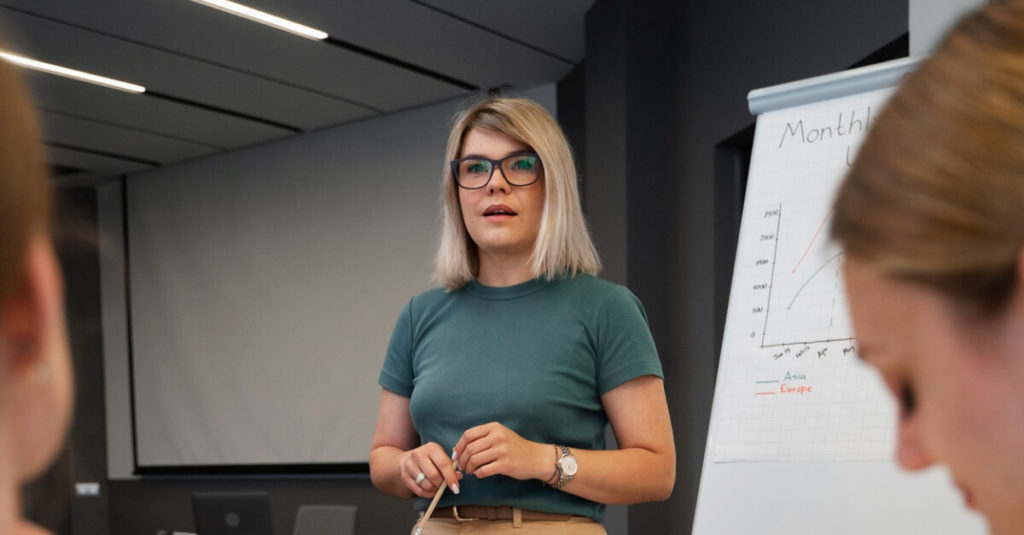
Why the CIO needs a PMO approach
Unlock business success: discover why the CIO must embrace a PMO approach! to elevate efficiency and boost productivity.

Lean Budgeting for Agile Portfolios: A Comprehensive Guide
Lean Budgeting: the financial revolution for Agile portfolios. Discover how to streamline project financing and optimize value delivery.

Implementing SAFe with a 7-step roadmap
Do you want to scale Agile at the enterprise level and don’t know where to start? We solve your doubts by explaining the steps to implement SAFe.

